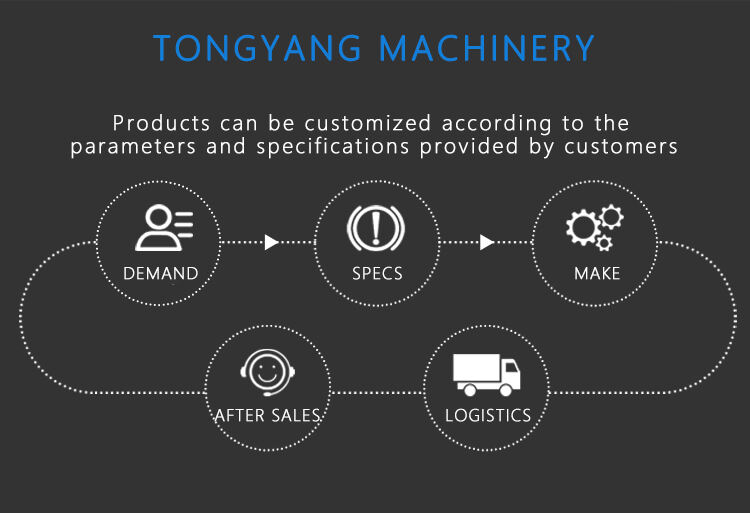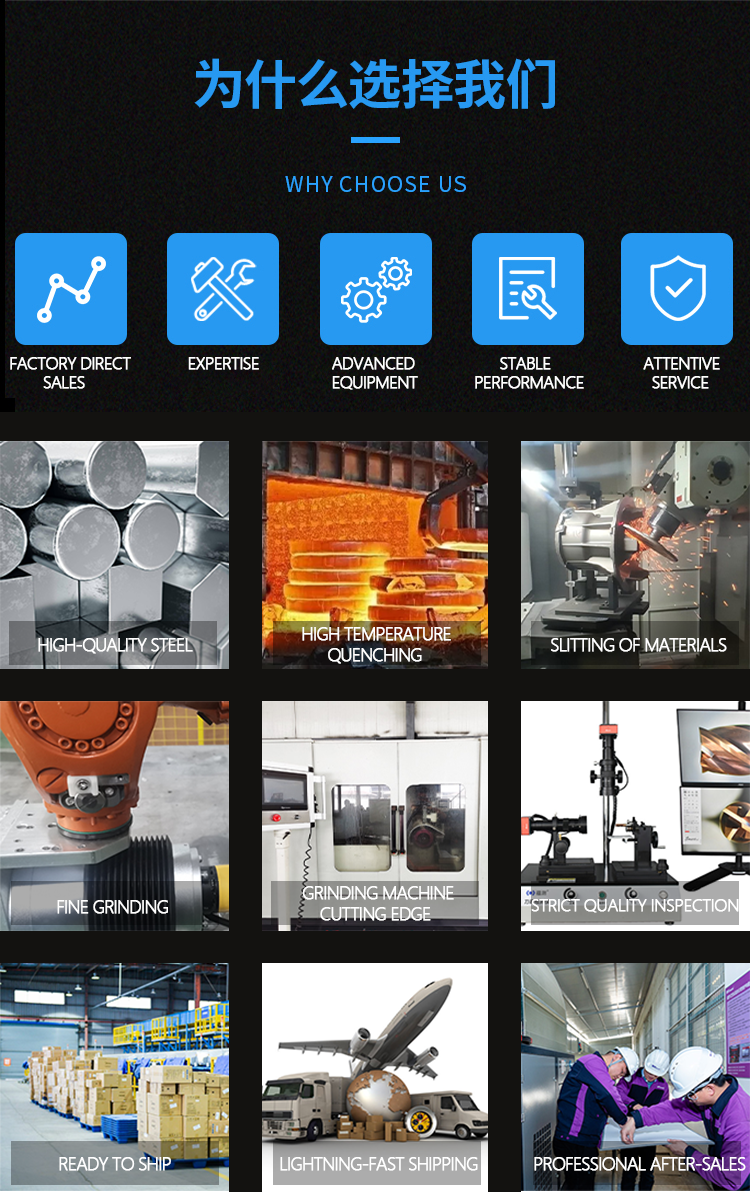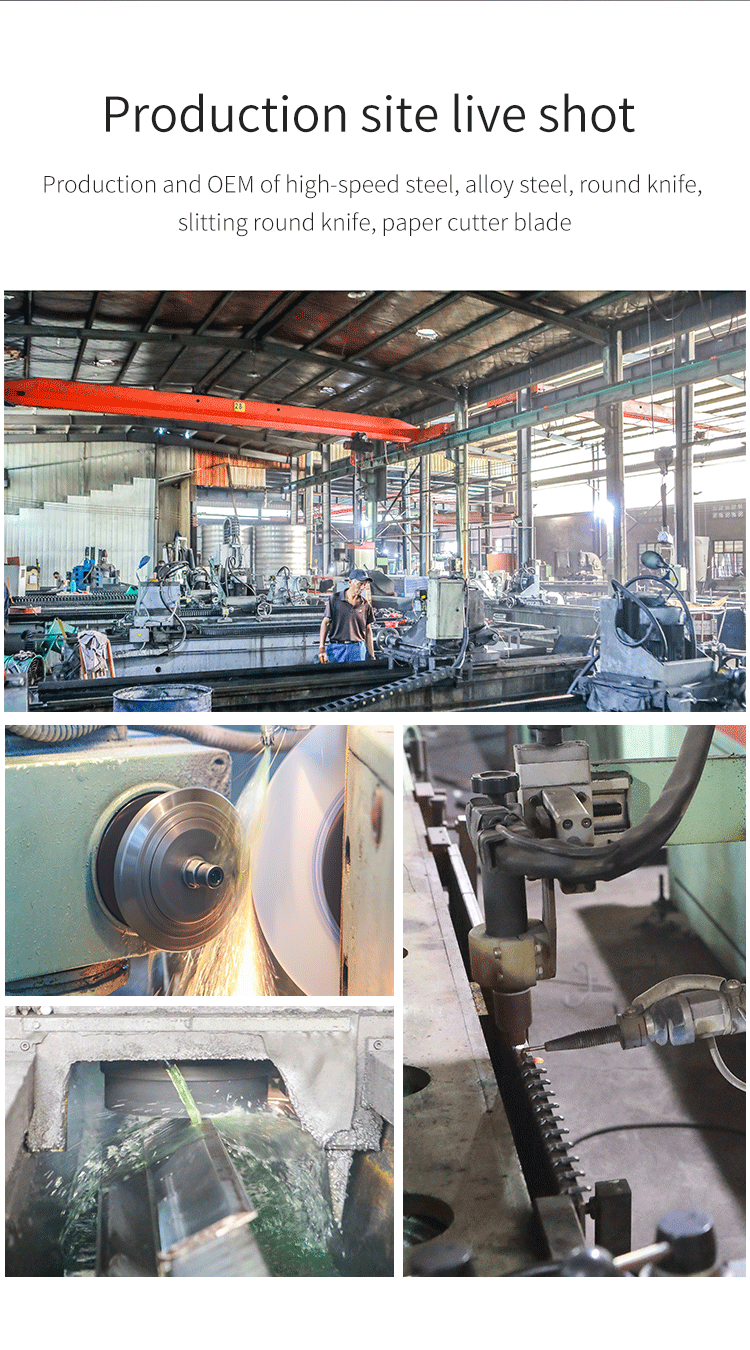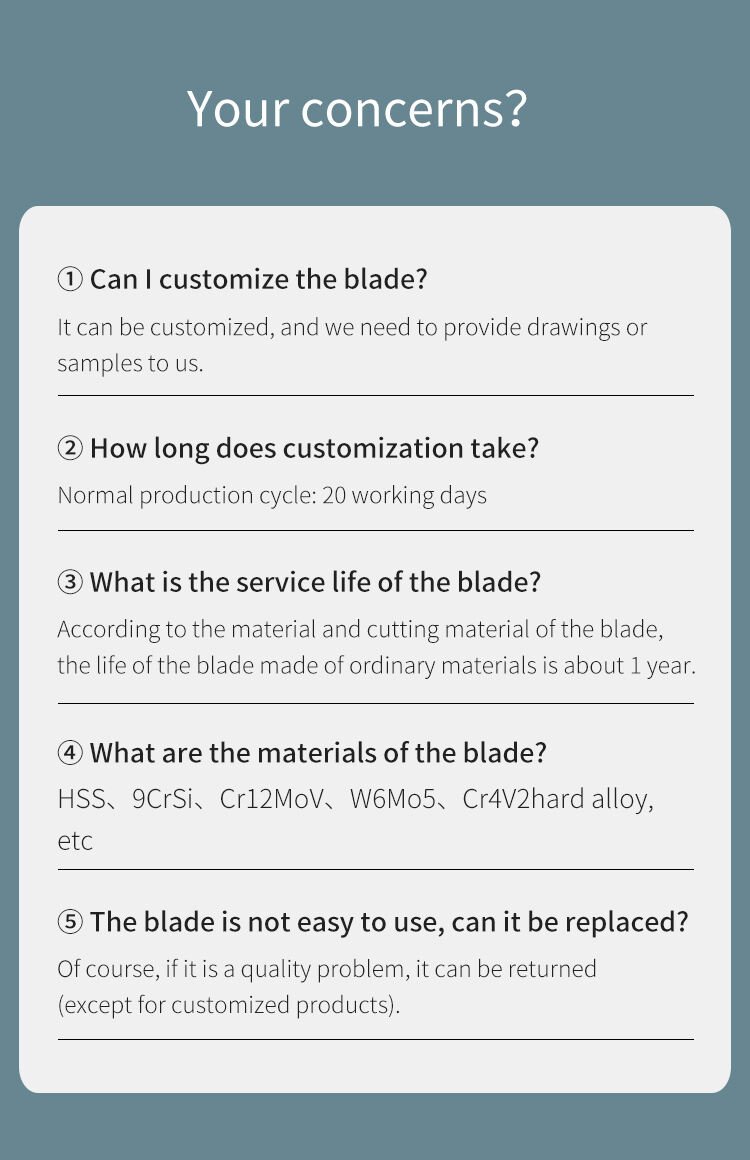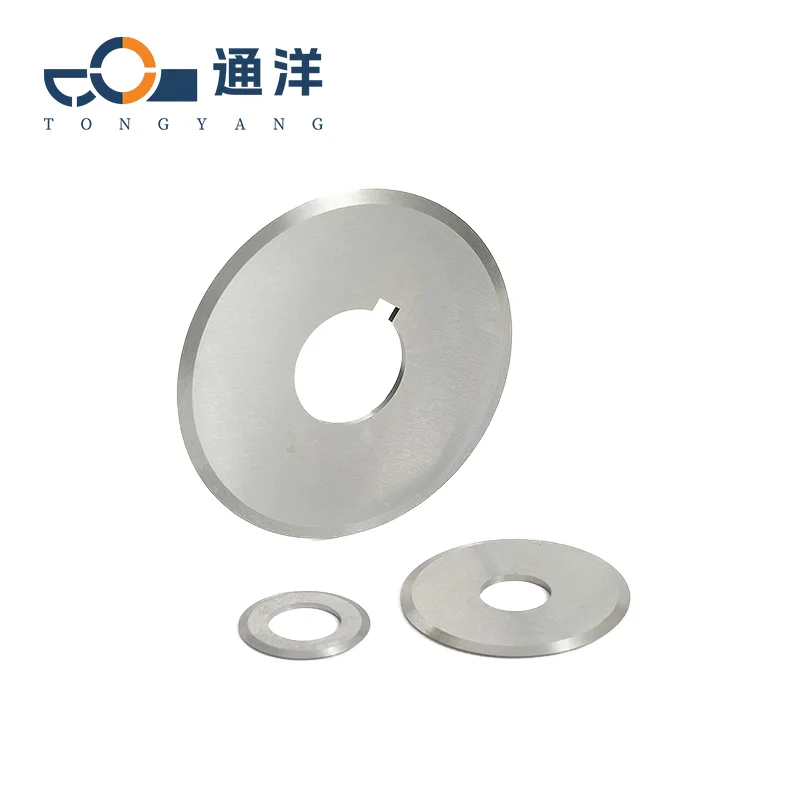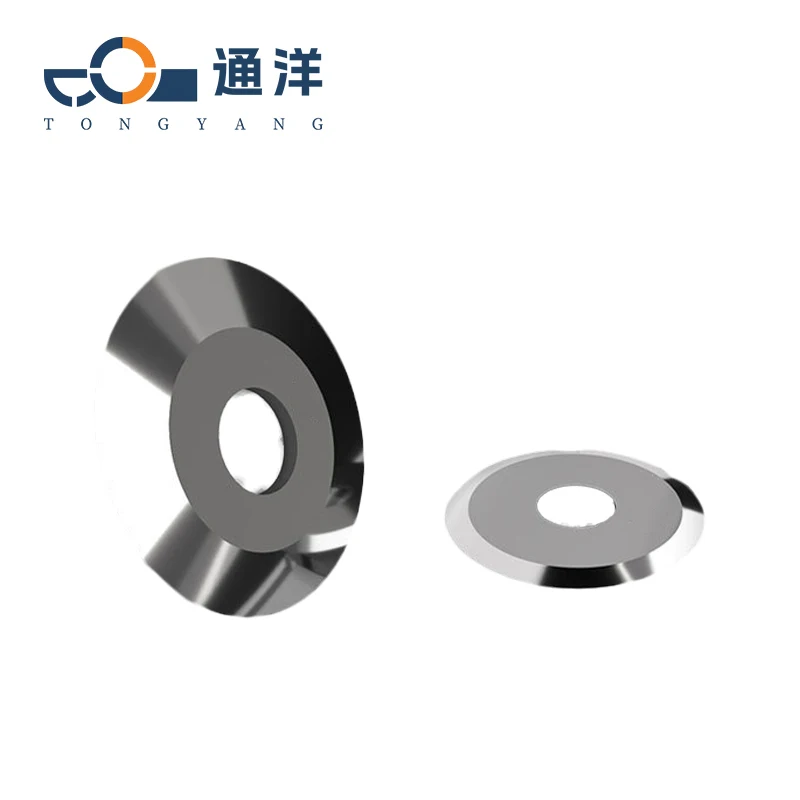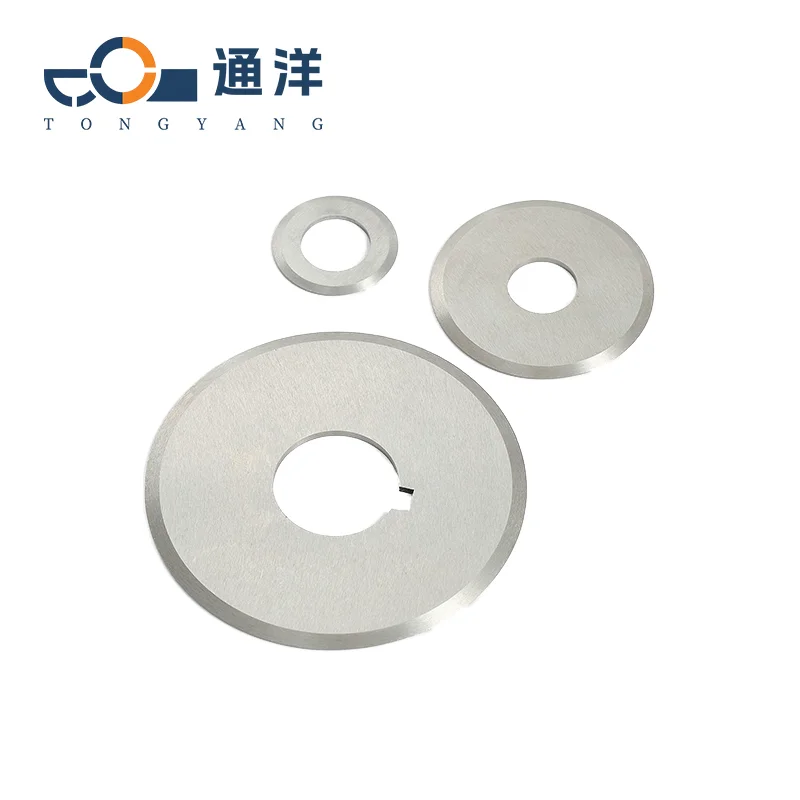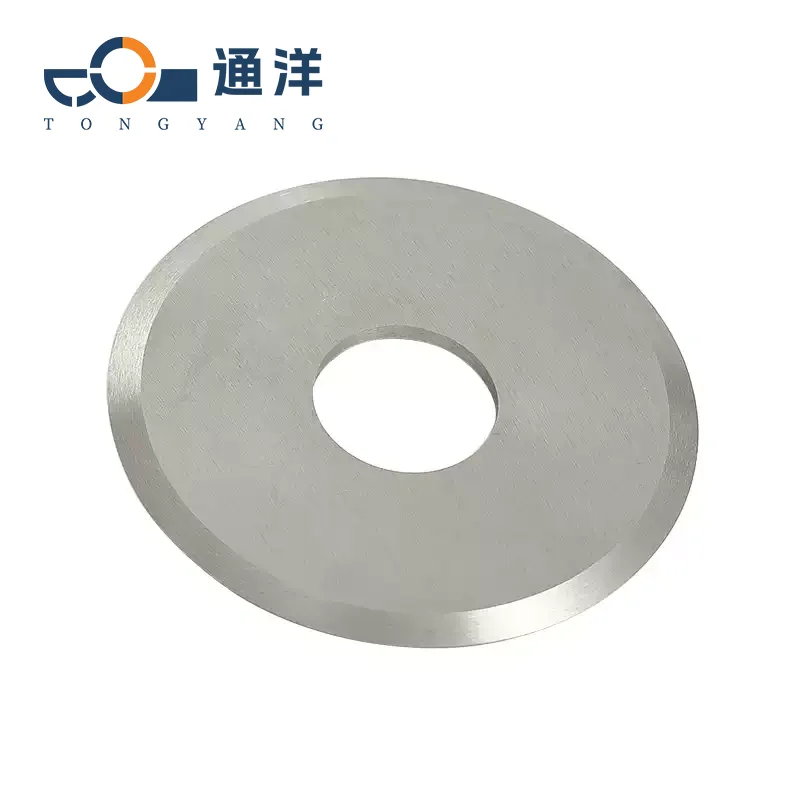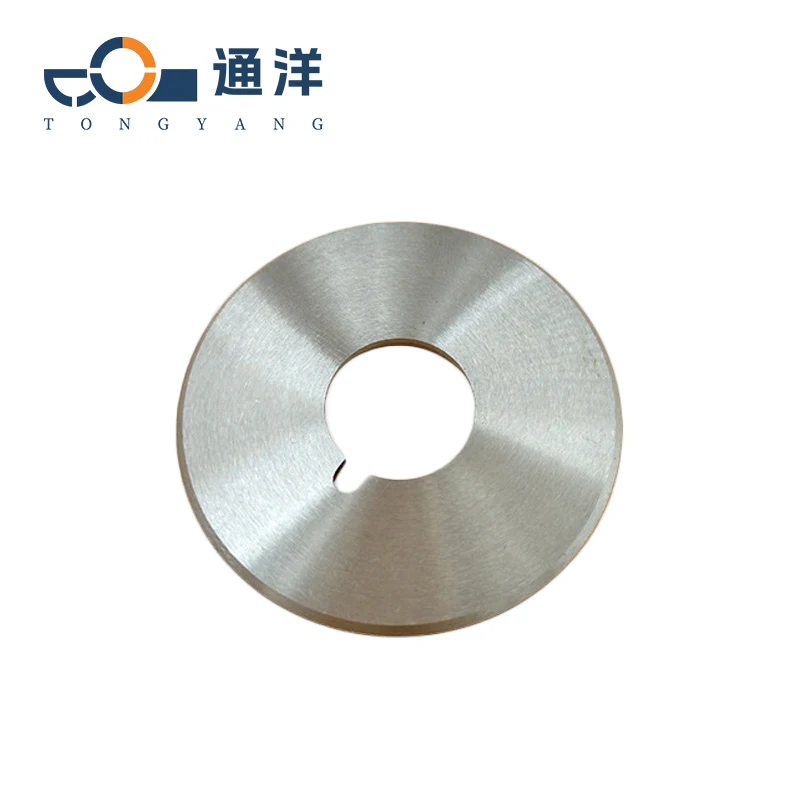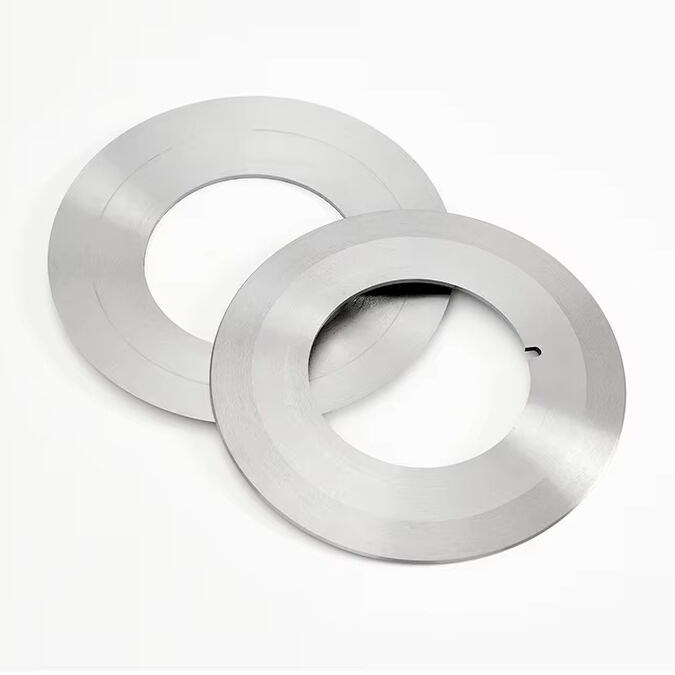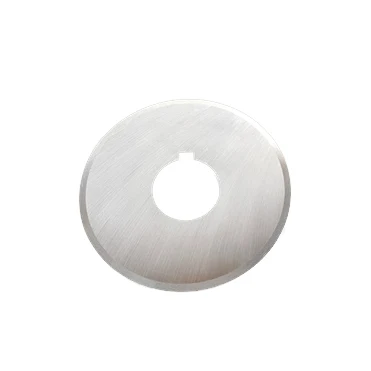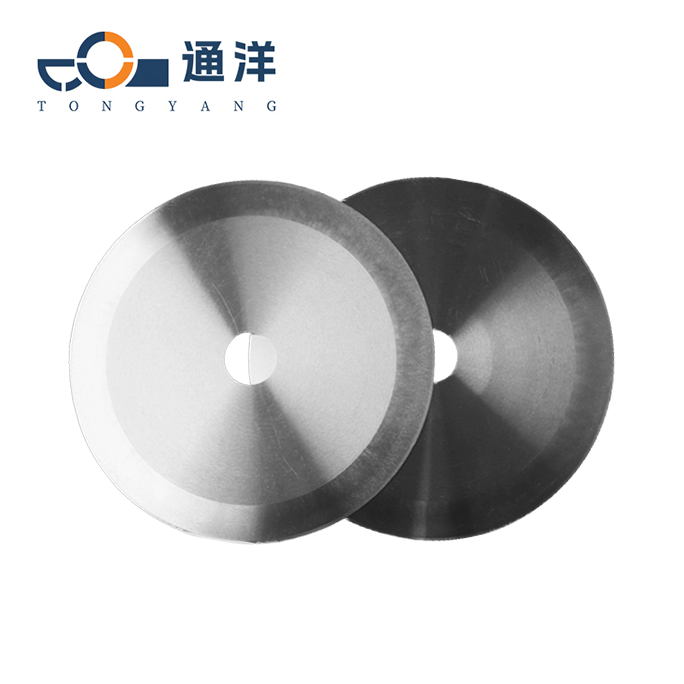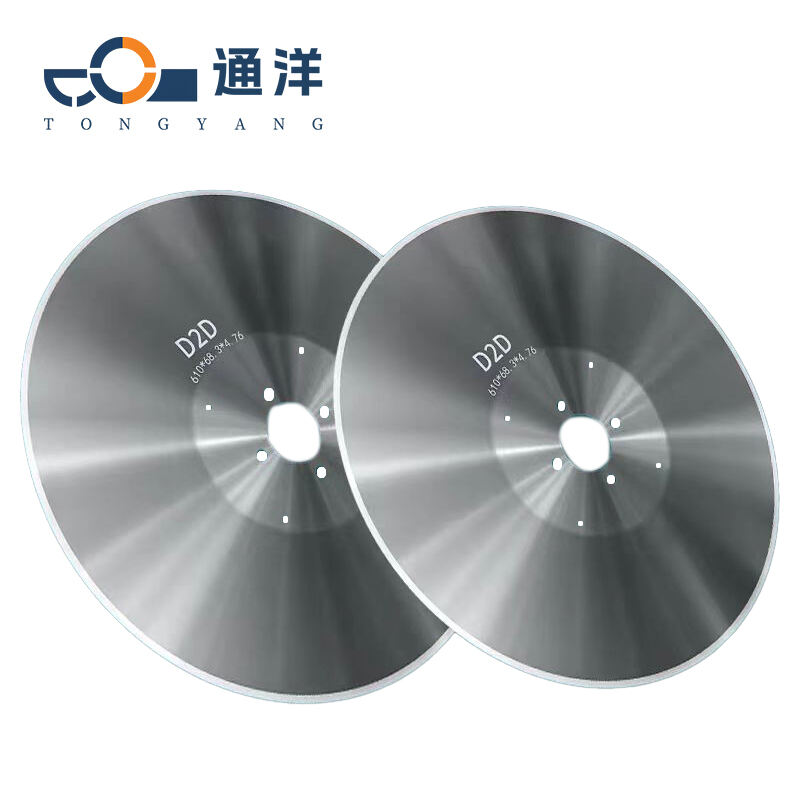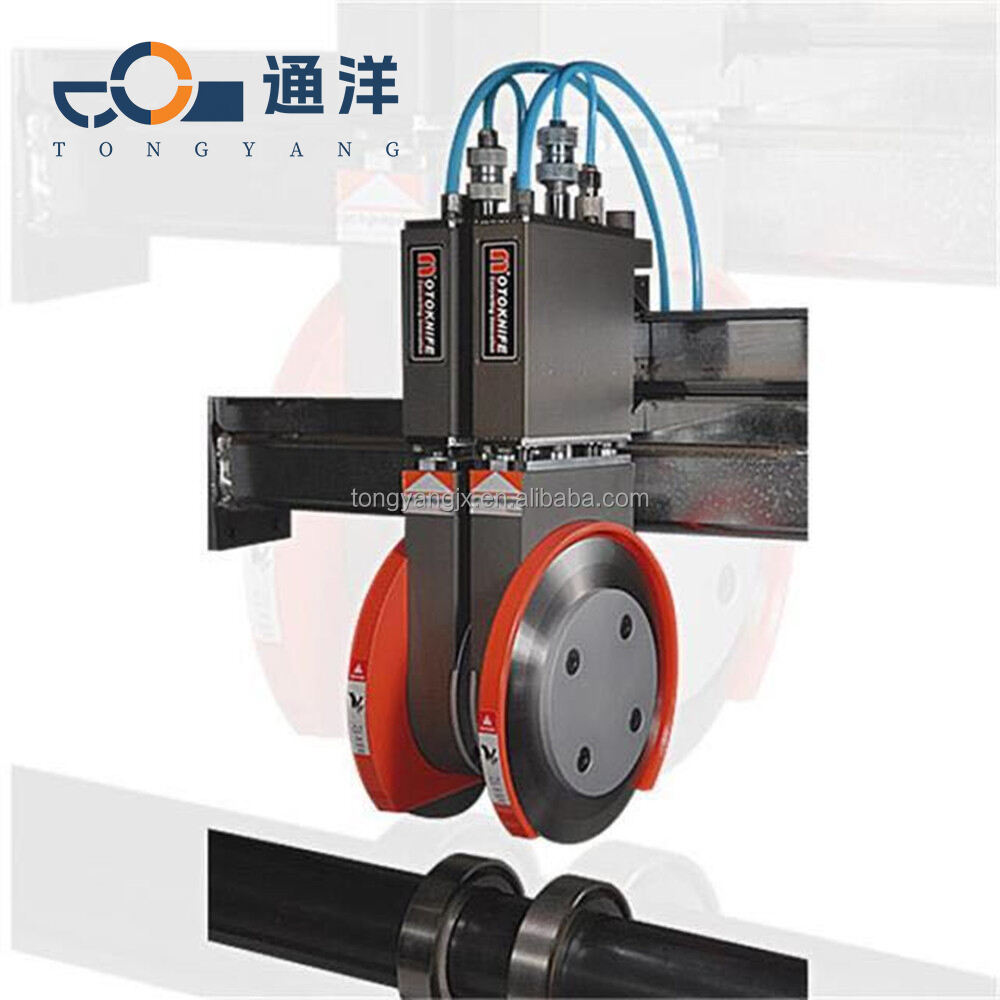Circular metal slitting knife
- Overview
- Related Products
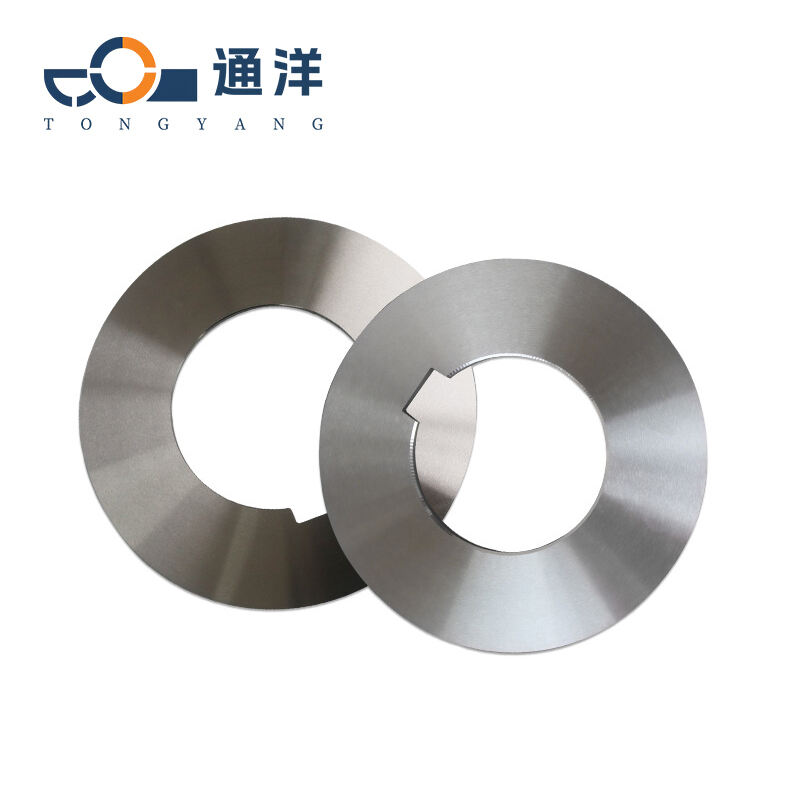
Common Material Types
| Material | Typical grade | HRC | Characteristics and Applicable Scenarios |
| Tool Steel | SK5, SK7 | 55-60 | Low cost, sharp cutting edge. It is suitable for low-speed cutting (<50m/min) of soft metals (low-carbon steel, copper). |
| High-Speed Steel (HSS) | M2, M42 | 62-68 | Resistant to high temperature (600℃) and wear-resistant. It is suitable for medium-speed cutting (50-150m/min), such as structural steel and thin stainless steel plates. |
| Cemented Carbide | YG8 (WC-Co), YT15 | 89-93HRA (≈HRC70-75) | Ultra-high hardness and wear resistance. It is suitable for high-speed cutting (150-300m/min), such as quenched steel, cast iron, and thick stainless steel plates. |
| Ceramics | Al₂O₃, Si₃N₄ | 91-94HRA (≈HRC78-82) | High hardness and low friction. It is suitable for high-speed precision cutting (>200m/min) of super-hard metals (titanium alloys, nickel-based alloys). |
Common Sizes, Models and Specifications
General Specifications
| Specification | Range (Common Values) | Explanation |
| Diameter (Φ) | 50-600mm (Commonly used values are 100-400mm) | For thin plate cutting: Φ100-200mm; For thick plates / high-speed equipment: Φ200-400mm |
| Range (Common Values) | 1-10mm (Selected according to the thickness of the metal) | For thin plates (<3mm): 1-3mm; For medium-thick plates (3-10mm): 3-6mm; For thick plates (>10mm): 6-10mm |
| Hole Diameter (D) | 15-100mm (Matching the shaft diameter of the equipment) | Commonly used values are: 20mm, 25mm, 32mm, 50mm (for large-scale equipment) |
| Cutting Edge Angle | Rake angle: -5° to +15°; Clearance angle: 5°-15° | For hard metals (such as quenched steel): negative rake angle (-5° to 0°); For soft metals: positive rake angle (+5° to +15°) |
Cutting Edge Design
Flat Edge: A general-purpose type, suitable for smooth metal surfaces (such as aluminum plates and thin
stainless steel sheets).
Serrated Edge: Increases the cutting force and prevents slipping. It is suitable for thick plates (>5mm) or high
hardness metals (such as cast iron).
Coated Edge: TiN (general-purpose), TiAlN (high-temperature resistant), CrN (corrosion-resistant), which can
reduce friction and tool sticking (such as in the cutting of stainless steel).
Wave-shaped Edge: Reduces the cutting resistance and is suitable for cutting multiple layers of stacked metals
(such as automotive sheet metals).
Special Specifications
Combined Knife: Multiple pieces are stacked (such as 2-5 pieces), which is used for synchronously cutting
multiple layers of metals (such as the sheet metal of distribution cabinets).
Step-shaped Knife: The cutting edge is in a stepped shape, and it is suitable for processing metals of different
thicknesses at one time (such as the groove of profiles).
Ultra-thin Knife: With a thickness of less than 1mm, it is used for cutting precision electronic components
(such as copper foils and aluminum strips).
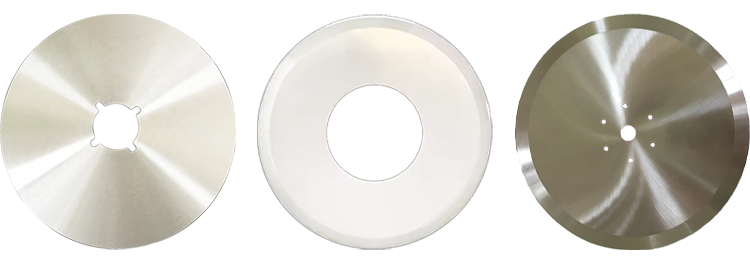
Selection Suggestions (According to the Type of Cut Metal)
| Material | Recommended Material | Typical Model (Φ×T×D) | Cutting Speed (m/min) |
| Low-carbon Steel | High-speed Steel (M2) / Cemented Carbide (YG8) | Φ150×3mm×25mm | 80-200 |
| Stainless Steel | Cemented Carbide (YT15) + TiAlN Coating | Φ200×5mm×32mm | 50-150 |
| Cast Iron | Cemented Carbide (YG6X) / CBN | Φ250×6mm×50mm | 30-100 |
| Quenched Steel (HRC>50) | CBN / Ceramic (Al₂O₃) | Φ120×2mm×20mm (Precision) | 100-300 |
| Aluminum Alloy | Diamond (PCD) / High-speed Steel (TiN Plated) | Φ300×4mm×50mm (High-speed) | 200-500 |
| Titanium Alloy | Ceramic (Si₃N₄) / CBN | Φ180×3mm×25mm | 20-50 (Requires Cooling) |
Maintenance and Precautions
The most important thing during the metal cutting process is cooling (using water cooling or oil cooling) to
prevent the cutting edge from overheating, which may affect the cutting performance and the service life
of the cutting blade.
During normal use, for cutting blades with a diameter larger than 200mm, dynamic balancing should be carried
out.
For cutting tasks with high precision requirements, dynamic balancing should be performed at least once a
week, and measurements should be taken once a day.
Service Life Reference
High-speed Steel: 50-200 hours (depending on the hardness of the metal)
Cemented Carbide: 200-500 hours (The service life of coated tools is extended by 30%)
CBN / Ceramic: 500-1000 hours (in precision cutting scenarios)
Customization Process
